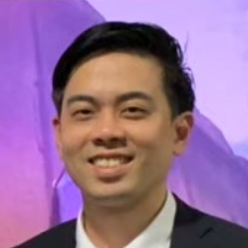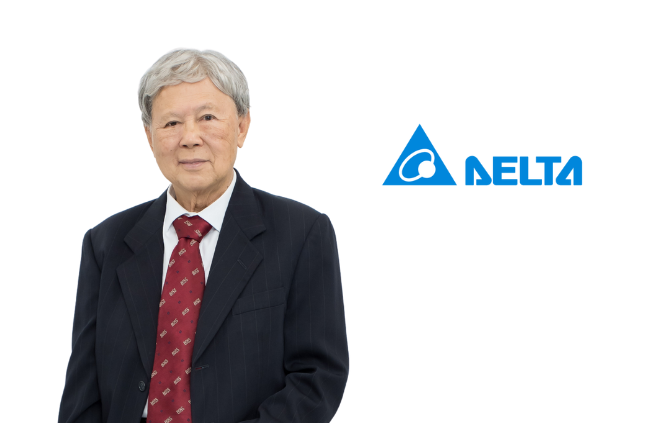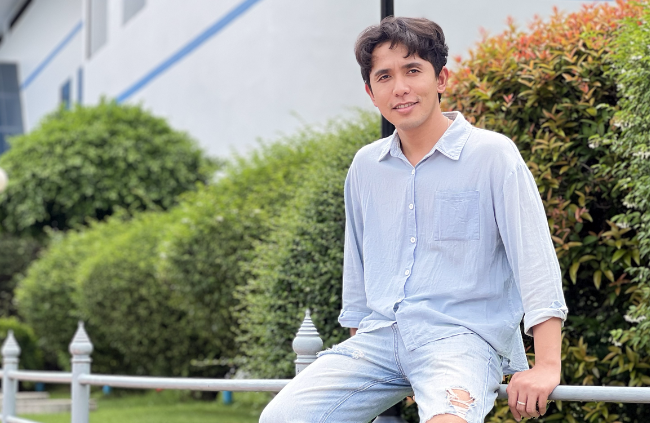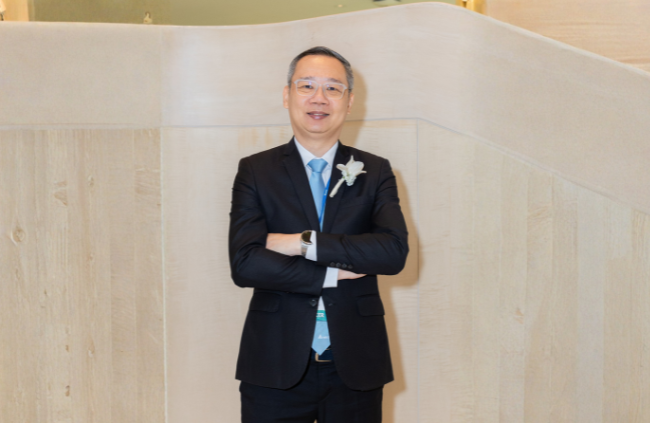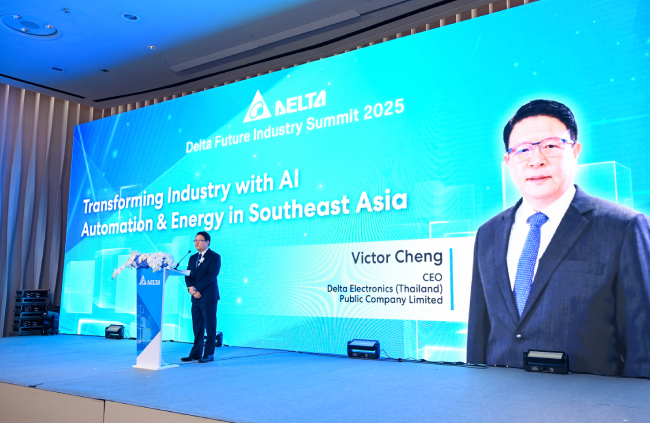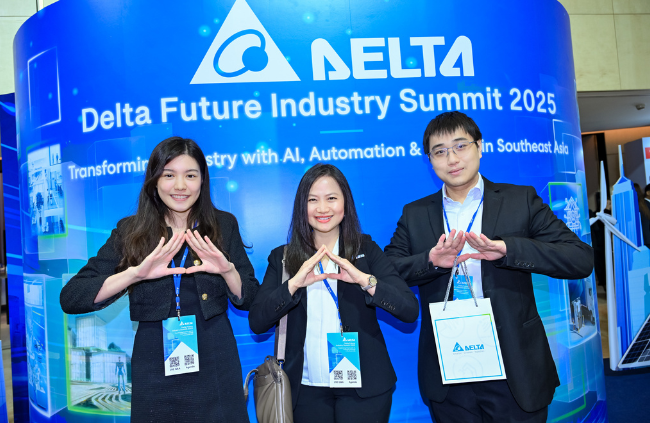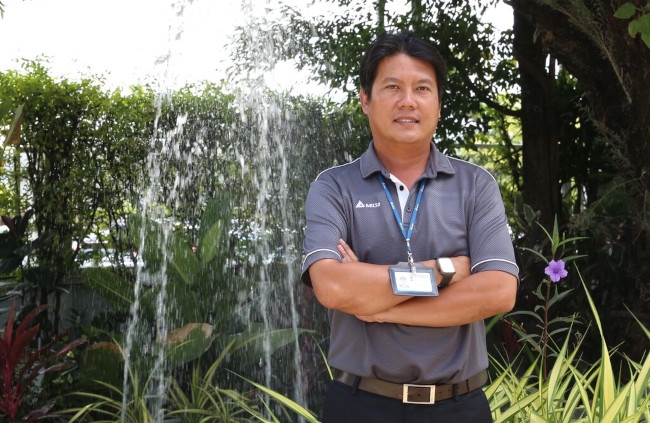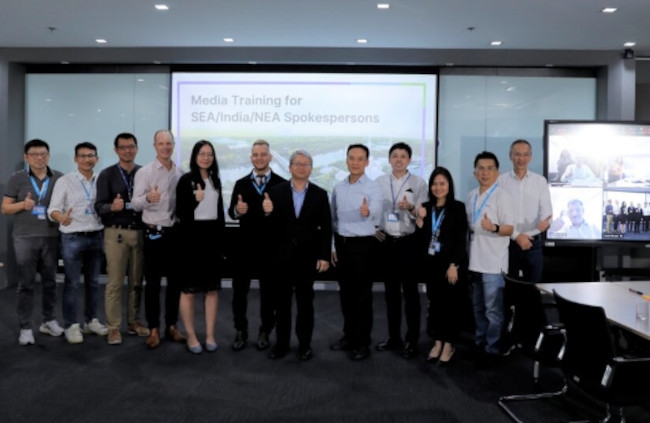Contribute and Build Your Career: Delta Singapore General Manager Shares Secrets to Delta and Innergie’s Commercial Success
By David Nakayama - Published September 10, 2023
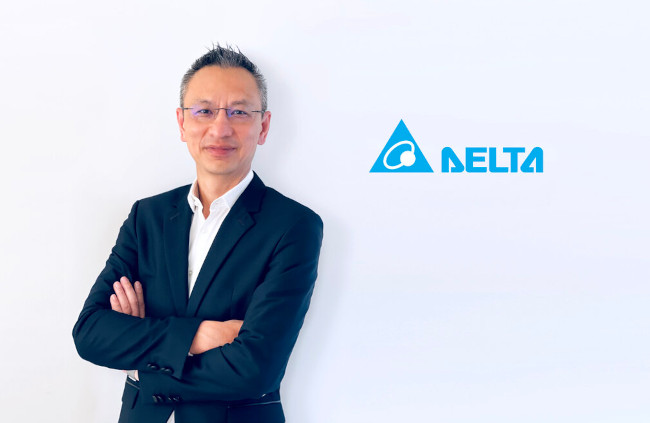
Interview with Mr. PS Tang, Delta Singapore General Manager and Founder of Innergie
Text by David Nakayama, DET Corp Comms
Photographs by PS Tang
Bangkok, Thailand, August 30, 2023- Recently, Delta Electronics boldly announced our ambition to evolve into an Industrial + Commercial brand. But beyond all the corporatespeak and redesigned name cards what does it really mean for us and how can graduate from a faceless OEM supplier to a recognized market contender? Today we have the rare opportunity to get valuable brand and marketing insights from the founder of Delta’s consumer mobile charging brand-Innergie!
I recently had the chance to have a Teams chat with PS Tang, Delta Singapore General Manager and Founder of Innergie, who shared his fascinating story of the highs and lows of an entrepreneurial and leadership career spanning Southeast Asia and Taiwan. He candidly details his exciting journey from starting a business to pitching Innergie to Delta and creating a brand in a totally unexplored market segment. In addition, he shares how he is continuing to add value today by leading teams at Delta Singapore.
Congratulations on your appointment this year to Delta Singapore General Manager. Can you share your background and career highlights?
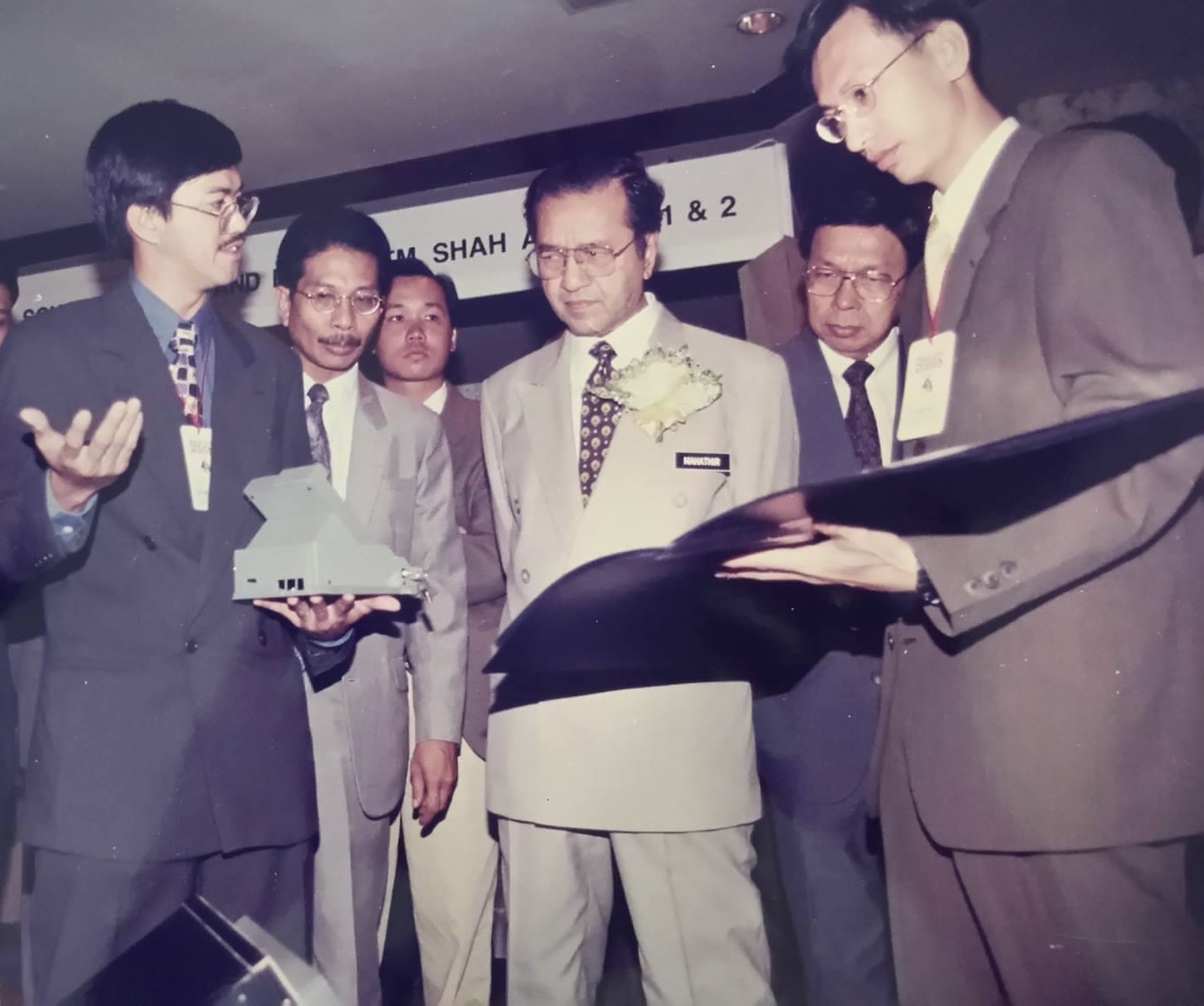
Image: Presenting a smart passport scanning machine to former Malaysian PM Dr. Mahathir (center) in 1995
I graduated from National Cheng Kung University (NCKU) in Taiwan with a degree in Mechanical Engineering. I then came back to work at Siemens in Singapore as a mechanical engineer before starting my own business as a design consultant.
I set up a small design consultancy with a business partner and we started to do product design for companies like HP, Motorola, Whirlpool and Thompson back when they used to make TVs. We started as a design house and then started full service from design to manufacturing very early in this region. At this time, we made a lot of money and publicly listed the company in Taiwan.
One of the most famous projects we did was Motorola’s smallest mobile phone back in the 90s. It was a very small flip phone with a V on the outside that blinks in different colors when you get an incoming call from different numbers. For example, if the yellow color blinks it’s your wife and if it’s red it’s your girlfriend:) At the time it was a very popular phone in Asia.
Unfortunately, we were a group of young designers who didn’t really know how to manage a fast-growing company and in the end we our own ways. At the time, I felt frustrated as my own company which I had worked to build for 10 years had not turned out well and I stopped working for two years. After a break, I woke up and restarted my career.
How did you join Delta, and what were your early days at the company like?
In 2006, someone introduced me to Delta Thailand. At the time Henry Hsieh was President after James Ng and a lot of the manufacturing and BGs were moving to China. Delta Thailand’s operations were shrinking, so morale was not great, and they were looking for a new business to drive development.
During my interview with Henry, he asked what I could do. Now I thought long about my future plans and what mistakes I made in the past in order to restart my career again. So right away I told Henry that Delta is the world’s number one in power supply, with global manufacturing and design, and I believe that in the future there's going to be a lot of power products in the consumer market.
Since I have product design experience and know-how in product marketing, I suggested that we leverage Delta's R&D and manufacturing resources to build a consumer power brand. He said, “Okay, come!”
Many people at Delta know you for establishing the Innergie mobile charging brand of Delta. Can you share your experience in developing and marketing Innergie products around the world?
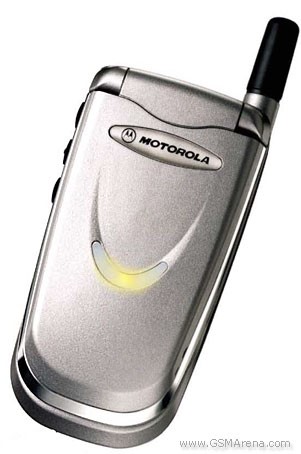
Image: The Motorola V8088 released in 2000was the smallest and lighted flip phone at the time with the caller-identifying system developed by PS Tang’s company
When I joined, over 90% of our revenue was from ODM business and the Delta Brand Management Office (BMO) only started in 2010 so we were quite advanced at DET to begin a consumer brand back in 2006. I told Henry that there's going to be more and more portable devices in the market that need more power and we’ll need better power adapters. Henry is a visionary and he thought it was a good idea, so I just went ahead with it.
Frankly speaking, I didn’t have a 100% clear direction but for the long term, I understood that there is a niche for products to support all the power-hungry laptops, phones and cameras with batteries to charge. People needed to communicate while moving around or travel for business trips and leisure and at the time there were no chargers sold separately in the market. Because all devices come with their own charger. Back then, all the device connectors and the power standards were different. There wasn’t a charger for everything. I realized that we must make a product that can charge everything.
The first major milestone was to develop a product that we called an “All-in-One” charger and is now the “One-for-All” Innergie charger. I had to recruit R&D engineers to join the Innergie team. During lunchtime, I’d go down to talk to the guys in the canteen and R&D and try to pull them onto my team. I talked to all the different plant managers, but nobody wanted to develop manufacturing for me. Finally, Vichai gave me a small section and then Pitisook joined as Production leader.
I had to just start from zero with nothing and no brand name. Can you imagine that 17 years ago we had no idea what consumer power solutions were? There was no category in the market. But today everybody knows because we have a lot of notebooks and smartphones instead of those old button mobile phones of the past. Before there were no USB type C chargers or even power banks in the market.
Innergie is one of Delta’s few consumer brands. How can you leverage your entrepreneurial and marketing experience to create a non-OEM business brand?
To tell you the truth, it's very challenging to start a commercial non-OEM business in a factory. Every day I would think about leaving because I used to run a company and I had a lot of freedom to do my own product design but when I joined an OEM company to create a B2C brand everything I wanted to do was like “Oh this cannot, Lah.” Then I thought, if I didn’t have experience in consumer electronics then why would Delta even hire me? So, let’s just do it and don’t complain! I decided that by hook or crook, I would get it done and get the Taiwan BG to help us in the region.
I wanted to produce a brand connecting people and this should show in the look and feel of the brand. It took two years to decide on the name and over one year to find the look and feel of Innergie. I chose the Delta blue and white background so it would be easy to merge with the Delta brand in the future. As for the name, I found it so difficult to create a name that is totally new and easy to remember. But one night I was half asleep, and it suddenly came to me so I woke up and wrote it down. I think I still keep that piece of paper somewhere around in my house.
The main meaning of Innergie is: Innovation and Energy. Another meaning that I like is the “Inner” energy or power. The spelling of energy is German “Energie” because the English spelling would make it “Innergy” with two long letters at the end which doesn’t look balanced or nice. Finally, we wanted a name that looked cool, so we used the blue and gray tones in the lettering up until five or six years ago when we rebranded.
What were some successes of Innergie in the early days, and how did you develop your product portfolio and business model?
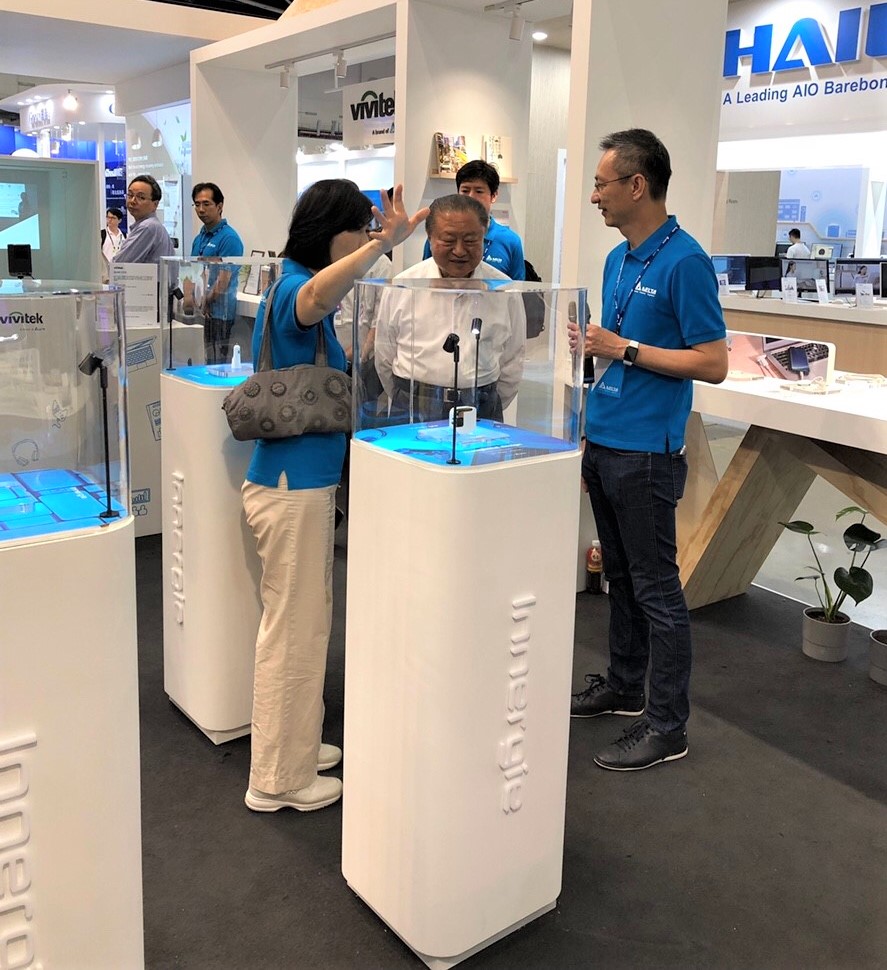 Image: Presenting Innergie to Delta Founder and Chairman Bruce Chang at Computex
Image: Presenting Innergie to Delta Founder and Chairman Bruce Chang at Computex
In 2008, we exhibited Innergie at the CES in the US and won the CES Design Innovation Award for our “All-in-One” charger. After this, we made a prediction in 2010, which was very aggressive at that time, that the future was in standardized charging. The consumer electronics industry would adopt the trend to reduce e-waste and make more environmentally friendly “green” electronics. We predicted power chargers would become optional and not come with the device which the iPhone began doing.
Our brand marketing had a lot of growth with the rise of the aftermarket charging segment and this was the next major milestone for us. We got King Power to display us at the duty-free store and then got displays at Changi Airport. With sales at the two largest airports in Southeast Asia, we were able to build our reputation and expand distribution to an airport in the Netherlands and other European locations.
We also expanded our product portfolio and created different models with various powers and even for charging in cars. That's how we grew our business. Our business model is B2B+C so we sell to distributors and also work with retailers for display and promotion. We also sell on our Innergie website, but we don’t have a physical store.
Why did you choose the challenge of leading Delta Singapore, and how are you transitioning from leading Innergie to managing a country office?
In 2013, we had a big reorganization at Delta and Innergie became under PSBG. Today the Innergie team has only 20 people in marketing and sales and all R&D and manufacturing was by PSBG. At this time, I left Delta because I didn’t want to move to Taiwan but it’s funny that I relocated to Taiwan anyway with another company in 2014. I rejoined Delta to lead Innergie again in 2018.
In the five years since left, a lot of the Innergie branding and product portfolio was gone so I started a rebrand. Now the whole situation has changed a lot and there were too many competitors in the consumer power market, and we were slow moving. So, we had to restart Innergie with the “One for All” series or the C4 and C6 chargers.
My assignment to Singapore came on very short notice, but I decided to take the challenge and came back after 23 years abroad. I was a little bit worried about adjusting, but the office and my home are close to my hometown and a lot of my family members are around. Soon I picked up Singlish again and I got used to working here, the weather and going to the hawker center.
The only thing I miss is the Innergie team and business so sometimes I go to the retail store to check out the goods on display. Other than that, I’m very happy in my new role supporting Delta Singapore in our support functions like HR, IT, Services, Marketing, Legal and DRC.
On August 9, Singapore celebrated its 58th birthday. As a multicultural nation, how do you manage your diverse teams and instill the Delta culture?
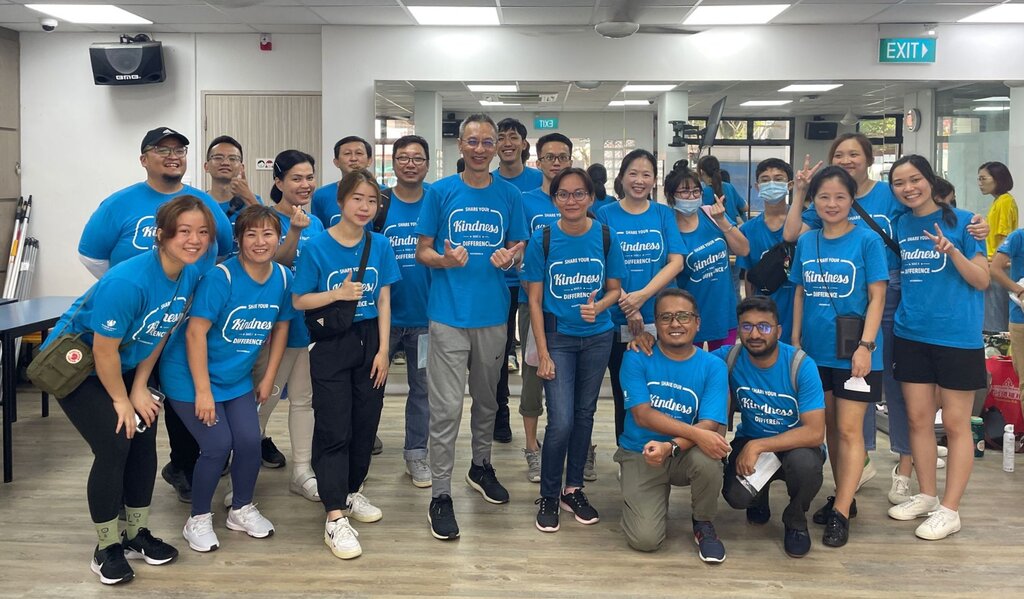
Singapore is very multinational similar to Thailand, but many people go to Thailand for travel while most people come to Singapore for work. At Delta Singapore, we have people from Taiwan, local Singaporeans, Malaysians and a lot of folks from China and India. Some arrivals just came here others have been here for many years and have become Singaporean permanent residents. Many people enjoy the city and the vibrant life and English is the major language.
We also have a mix of different cultures and every year we celebrate three official New Year holidays Chinese, Malay and Indian. All our colleagues get used to it and we learn what customs to be aware of during Ramadan we must be mindful of Muslim colleagues and don’t show food in front of them. As a Taiwanese company, sometimes Mandarin is used during management meetings which may be difficult for our Indian and Malay colleagues. But for the most part, English is the major language in the company like at DET.
Even though Delta has been here since 1997, originally many colleagues came in from different BUs and BGs as sales, and then our team became bigger. As a result, some colleagues in our supporting teams like HR or IT don’t even know how big Delta is. So, I organized a “PS Coffee Talk” where we get together and drink local Kopi have a snack and share our thoughts freely.
We held this event twice and during our last talk, the Marketing team shared with everyone who is Delta and our Green Building vision like RE100. We also held three Head of Department sharing sessions about their businesses and around 80% of our colleagues joined via Teams. Finally, we have a new hire sharing every one to two months.
Despite the fast pace of life in Singapore, how do you maintain a good work-life balance for health and well-being?
After work, I go for a walk or bike with my wife for one hour and on the weekends after exercise, I will go to the shopping area to look at the retail display. This is my hobby. I look at all the all the different products.
I moved back to Singapore during the COVID-19 pandemic when the government realized the need for more places to exercise and so they set up the park connector network. In Singapore, I often go running and biking along the East Coast. I also like to swim and relax by the poolside to read a book.
In Taiwan, I would often go to Yangmingshan National Park where you can walk up the hill in an hour and have breakfast at the top of the mountain trail. I also enjoyed riding along the Tamsui bike path and if you get tired you can bring your bike onto the MRT to return home.
How would you describe your management style, and how do help your potential talents to take the next step in their careers?
It would probably be better to ask other people about that. If people misunderstand, they may think that I'm very fussy but I don't think I micromanage and I’m definitely not like a Taiwan-style manager. Instead, I like to take the opportunity when there is an incident to share my thoughts. We will look into it together and then I will let them decide on the next steps. Some colleagues may think that I'm trying to tell them what to do, but actually, I'm just sharing my thoughts.
I share the reasoning behind actions and after one or two times I will not continue and let people try to pick it up themselves. I believe I give people a lot of freedom to think about their own career path and I always tell them that whatever we do, we can take as a learning for ourselves.
I always hope that we can do something with regional impact because Singapore is a very expensive location and I really hope that we can create value for our colleagues in the region while helping people succeed in their careers here.
Finally, is there anything you would like to share with your Delta colleagues around the world?
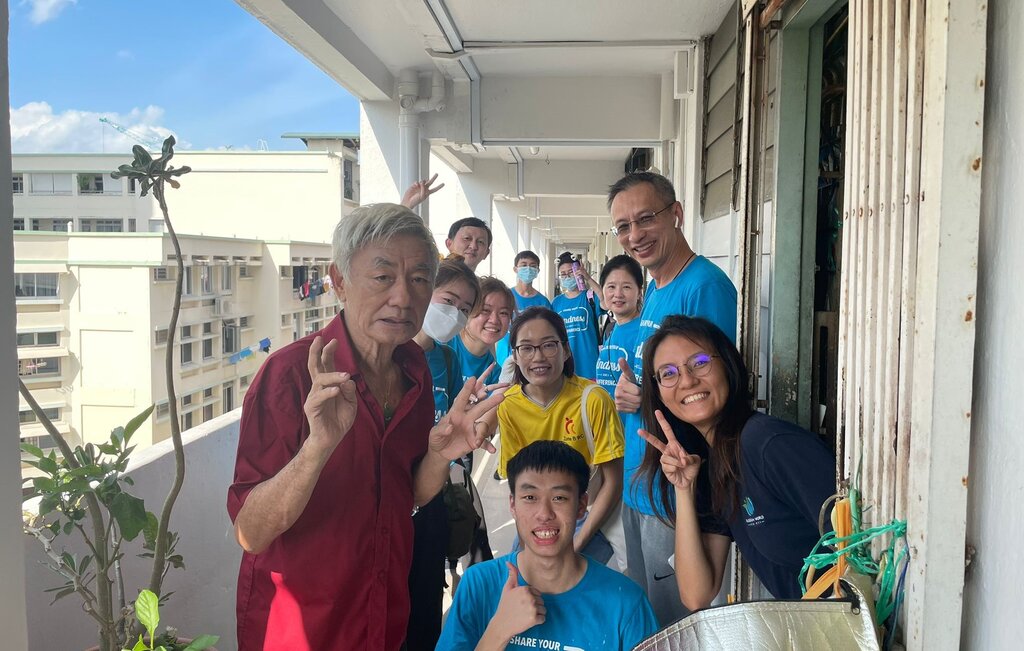
Delta is a very good company and I appreciate the opportunities for me here. I appreciate the vision of Bruce Cheng and the opportunity to work at Delta and continue the vision for a sustainable business.
I encourage everybody to take opportunities to contribute and continue to build up your career at Delta. Everything that we do here is all a learning experience for ourselves so take the opportunities to create value and to grow together with Delta.
